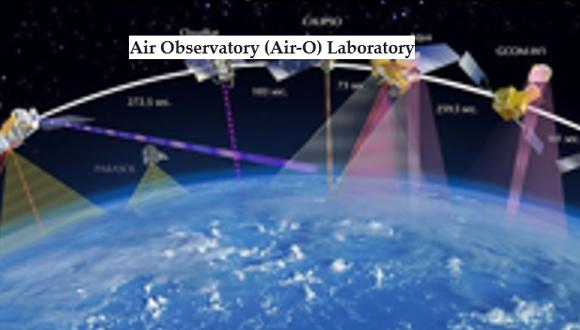Air Observatory (Air-O) Laboratory
PI: Alexandra Chudnovsky
Email: achudnov@tauex.tau.ac.il
The main research topic of the Air Quality Research Laboratory (Air-O Lab) is examining the ecological impact of environmental pollution on air quality. The main research tools are satellite sampling analysis in geographic information systems (GIS), ground monitoring with the focus on observational analysis and the examination of the relationship with various environmental reference variables using advanced statistical methods. In our lab we apply a unique combination of state-of-the-art active (Polly Lidar), passive satellite systems and ground-based remote-sensing measurements to quantify, for the first time, the relative contribution of urban, industrial and natural (e.g. dust) pollution sources on air quality levels within the metropolitan. We combine these data with spatial patterns of air temperatures, urban heat islands, and particulate matter concentrations within the city in order to generate a comprehensive view of the air pollution for public health purposes.
Current air quality measuring devices in Israel cannot distinguish between human-made pollutants, like industrial toxins, and natural ones, such as sand particles from the desert. Yet identifying the chemical makeup of pollutants is essential for improving health and environmental policies. Now, TAU AiR-O lab was equipped with the most advanced Polly-XT monitoring station – the first in Israel – that can pinpoint both the type and source of pollutants in the atmosphere using laser light pulses called LiDAR. This is a unique collaboration between our group (TAU) and TROPOS (Institute for Tropospheric Research, Leipzig, Germany). The data is integrated into their Eastern Mediterranean air quality research and TAU will become official LiDAR site. TROPOS group led by Dr. Ansmann A., Dr. Althausen D., Dr. Birgit Heese and Dr. Roni Engelman- developed and build this unique instrument.
Our major research goals:
-
Quantification of the contribution of urban sources on the observed aerosol pollution levels at the surface;
-
Establishment of a systematic 3-D spatio-temporal aerosol distribution and climatology for urban and rural background regions;
-
Studying the regional variability of different natural (e.g. dust) and anthropogenic aerosol components for different seasons of the year;
-
Studying the effect of dust storms on atmospheric chemistry and air quality in urban and industrialized areas
-
Studying the impact of vegetation on the air quality and health


